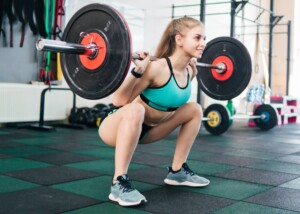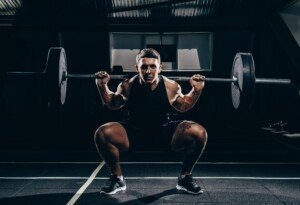
This article explains in plain English the fascinating reason why a wide stance makes squatting parallel so much easier for long femurs.
If you know that long femurs have been hampering your ability to go parallel in a squat, you’ve probably figured out at some point or have been told or read that a wide stance will correct the problem.
I’m a former personal trainer…but…I also have long femurs relative to my shin length, which causes the same issue as femurs exceeding the torso length.
To understand why a wide stance makes the parallel squat so much easier for those with long femurs, it’s important to know why a long femur creates an obstacle to squatting parallel.
NOTE: When I say “long femur,” this refers to relative thigh bone length to the rest of the leg, and has absolutely nothing to do with a person’s height!
A person who has a long thigh and short shin has a long femur, even though they may stand only 5-5.
As one descends into a squat, the hips get pushed out further away from the foot in terms of horizontal distance.
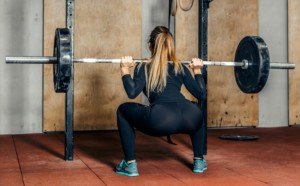
Shutterstock/IvanRiver
In order to keep balance, there must be a vertical line between the ankle/midfoot and behind the shoulders.
As you lower into a squat, this vertical line must be maintained or you’ll fall backwards.
To maintain this vertical line, you lean your torso forward, to bring the shoulder over the ankle/midfoot.
If you don’t lean over far enough, you’ll start falling backwards. You don’t want to lean more forward than you have to.
The more forward you lean, the more that the parallel squat becomes a low back exercise.
If you have long femurs, your hips will be pushed back far from that imaginary vertical line that extends up from the ankle/midfoot.
To counteract this, you must lean the torso in more than if you had short thigh bones.
If your femurs are long enough (again, this is relative to overall leg length and is not related to height), you will need to lean the torso over so far that it’s approaching parallel to the floor. This is an incorrect squat position.
Imagine a barbell across your upper back while your torso is parallel to the floor while you’re squatting parallel. This is not a back squat. It looks more like the good-morning exercise — shown below.
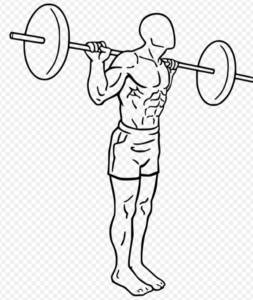
Everkinetic.com
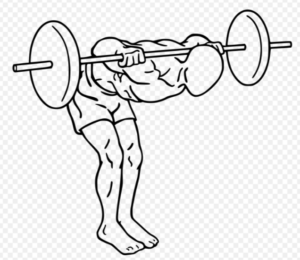
The reason someone with long femurs can’t squat parallel while maintaining even a 45 degree torso lean is because even at this much of a lean, the back of his shoulders still does not meet up with that imaginary vertical line.
It’s “behind” it, because the long femurs have his hips pushed out so far.
Why does a wide stance make parallel squats easier?
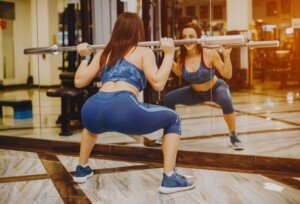
Freepik
The wide stance makes squatting parallel possible without having to pitch the torso forward like a good-morning exercise.
In fact, the wide stance can enable someone with long femurs to be quite upright; if the stance is wide enough, feet pointed out, one’s spine can actually be vertical.
But as the stance widens, the muscle recruitment changes.
When the stance is wide, the horizontal distance from hips to knees is shortened. This mimics a short femur.
Even though the knees are displaced outward, it’s that horizontal or forward distance between hips and knees that makes the difference.
The body now “thinks” it has short femurs!
The hips, then, aren’t thrust out so far behind the person.
Thus, he does not need to lean his torso over so much to align the back of his shoulder (where a barbell would go in a back squat) with his ankle/midfoot.
If the wide stance is uncomfortable on the knees, angle the feet out enough to relieve the discomfort.
If the stance is wide enough (especially with feet pointed out), the adductor (inner thigh) muscles will absorb considerable tension.
Stiff hips will make a very wide stance uncomfortable. Good hip flexibility is a must.
Go only as wide as necessary to maintain a parallel squat unless you want more adductor focus.
If long femurs are a problem with doing a parallel squat, widen your stance and see what happens.
 Lorra Garrick is a former personal trainer certified through the American Council on Exercise. At Bally Total Fitness she trained women and men of all ages for fat loss, muscle building, fitness and improved health.
Lorra Garrick is a former personal trainer certified through the American Council on Exercise. At Bally Total Fitness she trained women and men of all ages for fat loss, muscle building, fitness and improved health.
.


